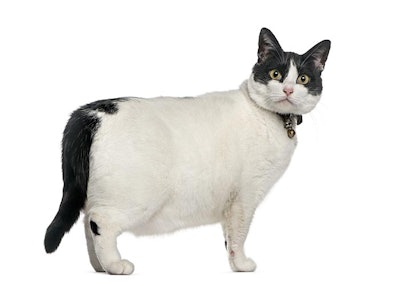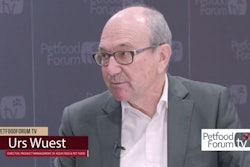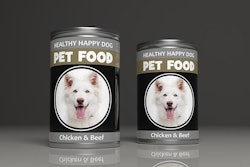
An increasingly popular dieting method for people has implications for fighting pet obesity, too. Intermittent fasting and its close relatives, like time-restricted eating, may be the “diet to watch in 2018” for humans, according to NutritionInsight.com, and even has government entities such as Australia’s Commonwealth Scientific and Industrial Research Organisation (CSIRO) promoting its benefits.
Besides weight loss, such benefits for people include burning fat; improving measures for cholesterol, triglycerides, inflammation and blood sugar; boosting proteins that strengthen neurons and are crucial for learning and memory; and even living longer. That’s according to a fairly substantial number of studies by researchers with CSIRO, the University of Surrey, University of Illinois, University of Florida, the US National Institute on Aging and other institutions.
Research has also found similar benefits for dogs and cats, and it’s in great need. According to a June 2017 report from Banfield Pet Hospital, at least a third of US dogs and cats are overweight, with the number of overweight cats spiking 169 percent since 2007 and overweight dogs rising by 158 percent. The Association for Pet Obesity Prevention (APOP) paints an even darker picture: its data shows 54 percent of US dogs and 59 percent of US cats are overweight or obese. That’s from 2016; given the recent history of pet obesity continually worsening, 2017 data would likely be the same or higher.
Pet food offering intermittent calorie restriction
Based on intermittent fasting studies done in humans, Nestlé Purina PetCare started research several years ago in cats on what it calls — and has since patented — intermittent calorie restriction (ICR). That has resulted in a new line of foods for dogs and cats under the Pro Plan brand called Simply Fit, which the company previewed at SuperZoo 2017 and launched this month.
ICR varies calorie intake over time by using two foods, one with a base calorie amount (Metabolic Maintenance) and one with 25 percent fewer calories (Fat Burn) per serving. Fed on an alternating schedule, the two foods work together to promote a continuously active metabolism, helping pets lose body fat, maintain lean muscle mass and reach an ideal body condition, according to Purina.
Another benefit, the company says, relates to pet owner behavior: owners often find it difficult to cut back on the amount of food they’re giving their beloved furry babies, succumbing to those begging whines and big, sad eyes. (It’s especially a problem given that, according to APOP research, many owners of overweight or obese dogs and cats don’t even consider the pets’ weight to be too high.) With a system like ICR, a pet can eat the same amount of either of the two Simply Fit foods so it doesn’t feel deprived and the owner doesn’t feel guilty.
New research: Weight loss in cats
That method may be preferable to owners — and definitely to their cats — than what a new study conducted at the University of Illinois indicates. Kelly Swanson, PhD, Kraft Heinz endowed professor in human nutrition in the Department of Animal Sciences and the Division of Nutritional Sciences at the university, and his team set out to identify a safe level of weight loss for cats, enough to notice a change but not lead to a condition, hepatic lipidosis, that cats are prone to if they don’t eat enough in a certain amount of time.
“We targeted a 1.5 percent body weight loss per week, which falls in line with the range (0.5 to 2 percent per week) suggested by the American Animal Hospital Association,” Swanson said. To meet that goal, the researchers had to cut food intake by 20 percent compared to a maintenance diet — but that wasn’t the end of the reduction. Swanson and his colleagues found that to achieve continued weight loss, they had to keep cutting intake every week.
“That’s a key point. When we go on a diet ourselves, we might lose a lot of weight in the first few weeks and then hit a road block,” he said. “Same with these animals. We had to keep going down, but it can be hard to convince a pet owner to do that.”
He has a good point, as alluded to by the APOP data and other research, including clinical studies in dogs he and his team have conducted. Yet their recent research also showed that as the cats lost weight, some bacterial groups in their guts became more abundant, while others decreased. Swanson said he thinks the shifts in fecal microbiota may lead to positive health effects for cats, such as lower inflammation, but he is waiting for additional results.
Nutrigenomics to the rescue
Another area of research, nutrigenomics — the study of how diets affect gene expression — is being applied to many aspects of health and nutrition for both people and animals. Specific to pets, applications include treating arthritis and joint inflammation, improving digestive health, increasing energy production for working animals like horses and herding dogs, and addressing pet obesity, according to Kristen Brennan, PhD, research project manager at Alltech.
In a recent webinar, “Nutrigenomics: Using Cutting-Edge Science to Understand the Hidden Effects of Nutrition,” Brennan highlighted studies (including a 2013 one by Swanson and his colleague) demonstrating how nutrigenomics can identify molecular markers associated with body weight gain and fat composition, and even target them before weight gain occurs. Further, research shows that, using nutrigenomics, diets or nutrients can change the expression of genes related to body weight and fat.
Pet food labeling may have implications for pet obesity
Pertaining to pet owner behavior again and how much food is fed to a pet, other recent research casts doubt on some common pet food labeling practices. To determine and state the amount of calories in a pet food (now required in the US), for years pet food companies have used a method called the modified Atwater equation. A study conducted by University of Guelph animal bioscientist A.K. Shoveller, PhD, and her team compared cats’ actual digestion of commercial cat foods with the caloric contents claimed on the label, which were estimated using the modified Atwater equation. Their findings? That method may be inaccurate because many dog and cat foods now contain premium ingredients that are more highly digestible than the equation assumes.
The modified Atwater equation doesn’t account for differences in energy lost in urine and feces, which depend on diet and the particular animals being fed, Shoveller said. Therefore, it cannot accurately determine metabolizable energy content for specific individual pets. However, a different version of the Atwater equation may be able to correct this underestimation of pet food calories; Shoveller and her team plan further research into that.
A study out of Italy determined that feeding guidelines on dog treat labels may exceed the recommended amount of calories dogs receive from treats each day. Scientists led by Giada Morelli, DVM, at the University of Padua, Italy, examined the labeling of 32 varieties of dog treats on the international market. “Pet treat producers should reconsider the feeding instructions provided on labels as we demonstrated that usually they exceed the 10 percent maintenance energy requirements suggested by the literature,” Morelli said.
All of this warrants further research before pet food companies consider changing their feeding guidelines, which in turn would result in very expensive label changes. Yet it should at least be on the radar, as pet food has a role and responsibility in addressing pet obesity.

















